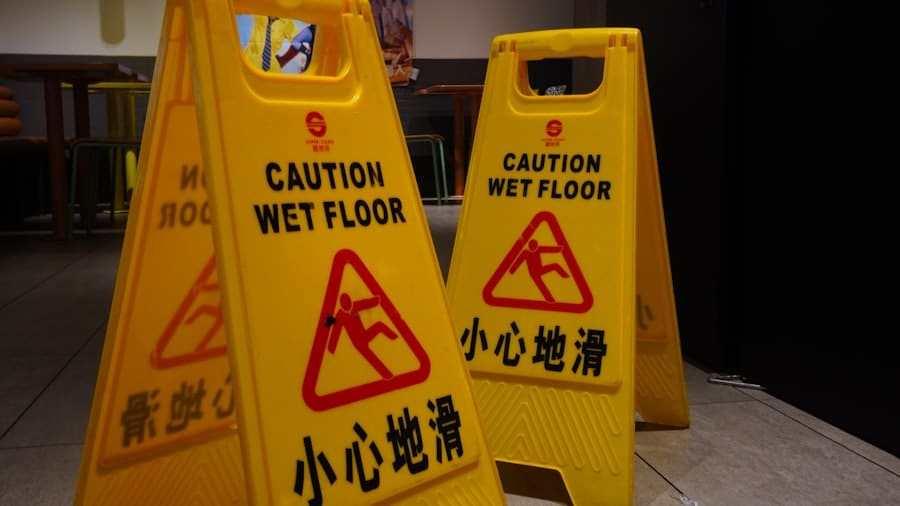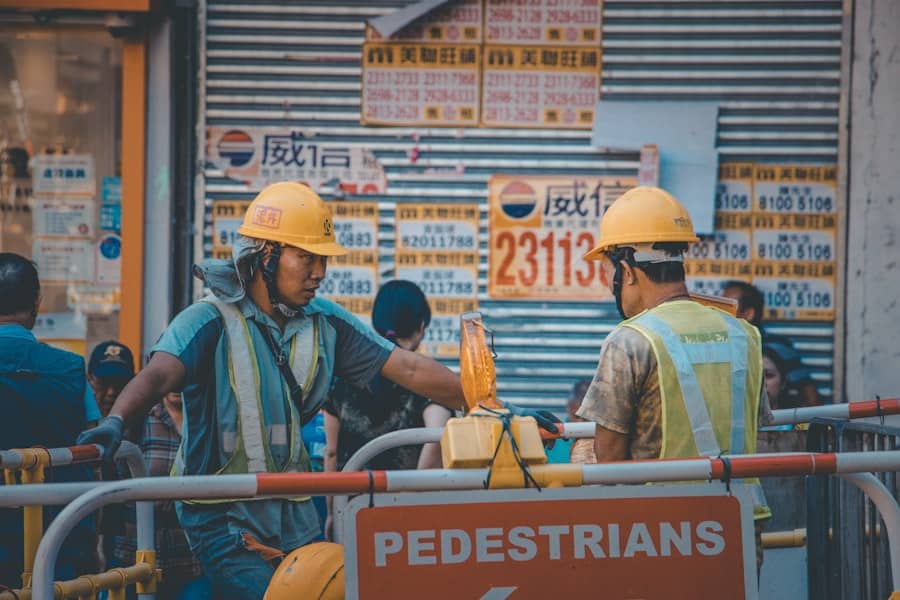Augmented Reality (AR) has emerged as a transformative technology across various industries, and construction is no exception. By overlaying digital information onto the physical world, AR enhances the way construction professionals visualize, plan, and execute projects. This technology allows for a more interactive experience, enabling workers to see 3D models of structures superimposed on the actual job site.
As construction projects become increasingly complex, the need for innovative solutions to improve efficiency and safety has never been more critical. AR not only aids in design and planning but also plays a pivotal role in enhancing safety protocols, which are essential in an industry known for its high-risk environment. The integration of AR into construction processes is not merely a trend; it represents a significant shift in how projects are managed and executed.
With the ability to visualize intricate details and potential hazards in real-time, AR empowers workers to make informed decisions on-site. This technology can bridge the gap between theoretical knowledge and practical application, ensuring that safety measures are not just theoretical but actively implemented. As we delve deeper into the importance of safety protocols in construction, it becomes evident that AR is not just an auxiliary tool but a fundamental component in fostering a safer work environment.
Key Takeaways
- AR technology is revolutionizing safety protocols in construction by providing real-time information and visualization of potential hazards.
- Examples of AR applications in enhancing safety in construction include virtual safety training, hazard detection, and real-time monitoring of construction sites.
- The benefits of using AR in safety protocols include improved worker safety, reduced accidents, and increased efficiency in identifying and addressing safety issues.
- Challenges and limitations of implementing AR in construction safety include cost, technological barriers, and the need for proper training and integration with existing safety protocols.
- Future trends and developments in AR for construction safety may include the integration of AI and machine learning for predictive safety analysis and the development of more advanced AR wearables for construction workers.
The Importance of Safety Protocols in Construction
Safety protocols in construction are paramount due to the inherently hazardous nature of the industry. Construction sites are fraught with risks, including falls from heights, equipment accidents, and exposure to harmful materials. According to the Occupational Safety and Health Administration (OSHA), one in ten construction workers is injured on the job each year, underscoring the critical need for robust safety measures.
These protocols are designed to protect workers, minimize accidents, and ensure compliance with legal regulations. They encompass a wide range of practices, from proper use of personal protective equipment (PPE) to comprehensive training programs that educate workers about potential hazards. Moreover, effective safety protocols contribute to overall project efficiency and cost-effectiveness.
When safety measures are prioritized, the likelihood of accidents decreases, leading to fewer work stoppages and reduced insurance costs. A culture of safety not only protects workers but also enhances morale and productivity. Workers who feel safe are more likely to be engaged and focused on their tasks, which ultimately contributes to the successful completion of projects.
Therefore, establishing and adhering to stringent safety protocols is not just a regulatory requirement; it is a fundamental aspect of operational excellence in construction.
How AR Technology is Revolutionizing Safety Protocols
The advent of AR technology is revolutionizing safety protocols in construction by providing real-time data visualization and interactive training experiences. Traditional safety training often relies on static presentations or manuals that may not effectively engage workers or convey the complexities of real-world scenarios. In contrast, AR can simulate hazardous situations in a controlled environment, allowing workers to practice their responses without the risk of injury.
For instance, AR applications can create virtual scenarios where workers must navigate potential hazards, reinforcing their understanding of safety protocols through immersive experiences. Additionally, AR enhances situational awareness on construction sites by overlaying critical safety information directly onto the worker’s field of vision. For example, AR glasses can display warnings about nearby equipment or highlight areas that require caution due to ongoing work.
This immediate access to information allows workers to make informed decisions quickly, reducing the likelihood of accidents. Furthermore, AR can facilitate better communication among team members by providing a shared visual reference point, ensuring that everyone is on the same page regarding safety measures and project requirements.
Examples of AR Applications in Enhancing Safety in Construction
Several companies have begun to harness the power of AR technology to enhance safety protocols within their operations. One notable example is the use of AR for site inspections. Companies like DAQRI have developed AR helmets that provide real-time data overlays during inspections.
These helmets can display structural integrity assessments or highlight areas that require maintenance, allowing inspectors to identify potential hazards before they become critical issues. By integrating AR into their inspection processes, companies can proactively address safety concerns and ensure compliance with regulations. Another compelling application of AR in construction safety is through training programs that utilize immersive simulations.
For instance, companies like PTC have created AR training modules that allow workers to interact with virtual equipment and practice safety procedures in a risk-free environment. These simulations can replicate various scenarios, such as working at heights or operating heavy machinery, enabling workers to gain hands-on experience without exposure to real-world dangers. This approach not only enhances learning retention but also prepares workers for the challenges they may face on-site.
Benefits of Using AR in Safety Protocols
The benefits of incorporating AR into safety protocols are manifold and extend beyond mere compliance with regulations. One significant advantage is the enhancement of training effectiveness. Traditional training methods often struggle to engage workers fully; however, AR provides an interactive platform that captivates attention and fosters deeper understanding.
Workers can visualize complex concepts and practice skills in a safe environment, leading to improved retention of safety procedures. Moreover, AR technology facilitates real-time communication and collaboration among team members. When workers can see the same digital overlays and annotations on their devices, it fosters a shared understanding of safety measures and project requirements.
This collaborative approach minimizes misunderstandings and ensures that everyone is aligned on safety protocols. Additionally, by reducing the likelihood of accidents through enhanced training and situational awareness, companies can lower their insurance premiums and reduce costs associated with workplace injuries.
Challenges and Limitations of Implementing AR in Construction Safety
Despite its numerous advantages, implementing AR technology in construction safety protocols is not without challenges. One significant barrier is the initial cost associated with acquiring AR hardware and software solutions. For many construction companies, especially smaller firms with limited budgets, investing in advanced technology can be daunting.
The return on investment may not be immediately apparent, leading some organizations to hesitate in adopting AR solutions. Furthermore, there are technical challenges related to integrating AR systems into existing workflows. Construction sites are dynamic environments where conditions can change rapidly; thus, ensuring that AR applications remain accurate and relevant requires ongoing updates and maintenance.
Additionally, there may be resistance from workers who are accustomed to traditional methods and may be skeptical about adopting new technologies. Overcoming this resistance necessitates comprehensive training and a cultural shift within organizations to embrace innovation as a means of enhancing safety.
Future Trends and Developments in AR for Construction Safety
As technology continues to evolve, the future of AR in construction safety looks promising. One emerging trend is the integration of artificial intelligence (AI) with AR systems to create more sophisticated safety solutions. AI algorithms can analyze data from various sources—such as sensors on construction equipment or environmental conditions—and provide real-time insights that enhance situational awareness for workers on-site.
Another exciting development is the potential for remote collaboration through AR technology. With advancements in 5G connectivity, workers could share their AR experiences with remote experts who can provide guidance or support in real-time.
This capability would be particularly beneficial for complex projects where specialized knowledge is required but may not be available on-site. By leveraging remote expertise through AR, construction companies can enhance their safety protocols while ensuring that workers have access to the resources they need to navigate challenging situations effectively.
The Role of AR in Improving Safety Protocols in Construction
The integration of Augmented Reality into construction safety protocols represents a significant advancement in how the industry approaches risk management and worker protection.
As technology continues to evolve, the potential for AR applications in enhancing safety will only grow, paving the way for a future where construction sites are safer and more efficient than ever before.
In summary, while challenges remain in implementing AR solutions within construction safety protocols, the benefits far outweigh these obstacles. The ability to visualize hazards, engage workers through interactive training, and foster collaboration among teams positions AR as a vital tool in creating safer work environments. As we look ahead, it is clear that Augmented Reality will play an increasingly important role in shaping the future of construction safety practices.
In a related article discussing the importance of wearable technology in enhancing safety protocols in construction, the Samsung Smartwatches Review highlights the potential benefits of using smartwatches to monitor workers’ health and safety in real-time. These devices can track vital signs, detect falls, and provide instant alerts in case of emergencies, ultimately improving overall safety on construction sites. By incorporating advanced technology like smartwatches, construction companies can ensure a safer work environment for their employees.
FAQs
What is AR?
AR stands for Augmented Reality, which is a technology that superimposes computer-generated images and information onto the real world, providing a composite view.
How is AR used in construction?
AR is used in construction to enhance safety protocols by providing real-time information and visualizations of potential hazards, safety procedures, and equipment operation.
What are the benefits of using AR in construction safety protocols?
The benefits of using AR in construction safety protocols include improved hazard recognition, enhanced safety training, better communication of safety procedures, and increased situational awareness for workers.
How does AR enhance hazard recognition in construction?
AR enhances hazard recognition in construction by overlaying digital information onto the physical environment, making it easier for workers to identify potential hazards and take appropriate safety measures.
What role does AR play in safety training for construction workers?
AR plays a crucial role in safety training for construction workers by providing interactive and immersive training experiences, simulating real-life scenarios, and allowing workers to practice safety procedures in a controlled environment.
How can AR improve communication of safety procedures in construction?
AR can improve communication of safety procedures in construction by providing visual and interactive instructions, making it easier for workers to understand and follow safety protocols.
What are some examples of AR applications in construction safety?
Some examples of AR applications in construction safety include virtual safety inspections, equipment operation visualizations, hazard simulations, and interactive safety training modules.



